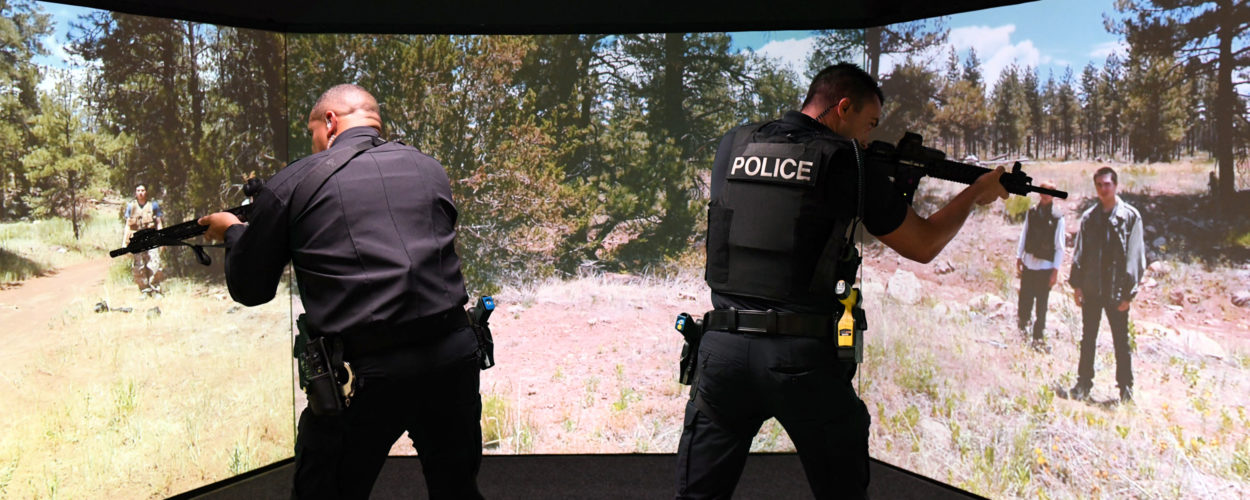
You’re on foot patrol with your partner when you see a subject that you’ve had interactions with before. The two of you decide to speak to the subject, and proceed to walk down the alley to see what he is up to.
As you approach him, he decides to be uncooperative. He doesn’t want to talk to you, he starts to flail his arms and become more aggressive. As your partner attempts to arrest the subject, a white pickup truck suddenly pulls up on the street behind you. The driver immediately gets out and starts shooting, striking the subject and your partner. Your only option is to get off the ‘X’ and return fire in an attempt to stop this subject.
You fire your handgun, and immediately stop the threat. The simulator screens around you tell you to make your weapons safe and to prepare for a debrief. Congratulations, you just completed the “Nightmare Alley” scenario in the VirTra simulator.
The scenario sounded a bit far-fetched, didn’t it? What are the chances that while you’re out checking on a subject, some random guy is going to pull up and just start shooting at you? That wouldn’t really happen…would it?
As a matter of fact, that scenario DID happen, which is how it became a training event for the VirTra simulator. That brings us to the point of this article: How realistic is your training?
When you’re putting officers through scenario training, how much time do you put into the development of the event? What are you basing the scenarios on?
With the amount of body cam footage that is easily available, you should have no problem creating scenarios based on real-life incidents. Many of the high-profile incidents are routinely debriefed by training experts, so a lot of the legwork for you lesson plan is already done for you. The bonus of creating scenarios based on incidents that actually happened is that when a student decides to wise-off and shout “This would never happen!” It’s always a great feeling pulling out the “This Actually Happened” card.
When taking an actual incident and making it into a training scenario, it’s tempting to just copy it and call it “done.” What we do at VirTra – and what we suggest other trainers do – is first decide what the training goal is. Once that’s done, alter the scenario enough that it’s not easily recognizable by the trainees and that you’ll be able to have multiple ways to run the same scenario, but with different options based on how the trainee handles the incident.
Finally, using real incidents to create your training scenarios will give you and your agency a lot of validation on the training that it’s doing. Training to the actual situations officers are facing makes it a lot easier to justify that training.
Stay Safe. Stay Dedicated.
—
This article was written by TJ Alioto, VirTra Law Enforcement Subject Matter Expert
Recently Published
Join Our Newsletter







